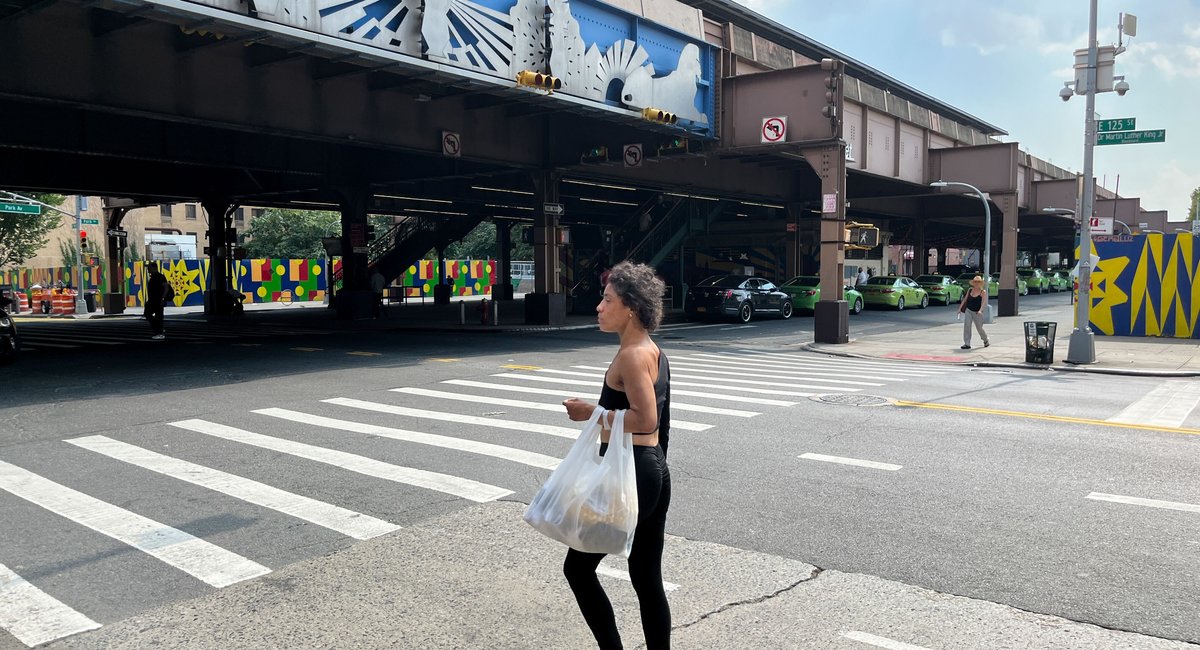The debate over Gov. Kathy Hochul’s pause on congestion pricing has rattled residents in one of Manhattan’s largest transit deserts, who pine for a new subway line but don’t think it should be financed by the controversial tolls.
East Harlemites have been promised a new subway beneath Second Avenue for more than a century. And without a nearby train line, it’s far easier to drive to or from the neighborhood than it is to take mass transit.
After congestion pricing was approved earlier this year, it looked like the dream of the Second Avenue subway was going to be realized thanks to a federal grant and the money the MTA would get from the tolling program. The agency was prepared to spend $7.7 billion to add three new stations to the Q train, extending it uptown to East 125th Street and Lexington Avenue. But that changed when Hochul halted congestion pricing in June.
The MTA is now holding off on awarding a contract to dig the tunnel for the extension, stating in a public document that funding for the work “requires the implementation of congestion pricing.”
While people who live and work in East Harlem say they are desperate for a subway line that shortens their long walks to the closest stations beneath Lexington Avenue, many said it wasn’t fair for the MTA to require drivers in the neighborhood to pay a congestion pricing toll in order to build the Q train extension. Before Hochul paused the program, the MTA planned to charge drivers a $15 daytime toll to drive south of 60th Street in Manhattan.
Keith Greene, who works as a substance abuse counselor in East Harlem and lives off the Q train in Brooklyn, said the Second Avenue subway extension would drastically speed up his commute.
“It would be great if they had a Q train here,” said Greene. “But, I don’t want my convenience to be a burden on people, the rest of society, because $15 is just outrageous.”
Kyana Jimenez, 23, who lives in East Harlem and works in Midtown, said she takes the bus to work down Second Avenue and noted that she avoids the Lexington Avenue subway line because it’s “dirty, a lot of homeless people are in it.”
“The MTA sucks, so what do you think? Of course everybody’s going to use their car,” said Jimenez. “But the Q train, adding more stops, that would be very convenient,” Jimenez added.
Hochul also appears conflicted. Her move on June 5 to put congestion pricing on an “indefinite” pause blew a $16.5 billion hole in the MTA’s construction budget. She’s since said all of the projects that would have been funded by the tolls — including the Second Avenue subway extension — would be funded by a different revenue stream. She has yet to identify where that money could come from.
“Governor Hochul has stated repeatedly that she is committed to funding the MTA Capital Plan including the Second Avenue Subway and is working with partners in government on funding mechanisms while congestion pricing is paused,” John Lindsay, a spokesperson for Hochul, wrote in a statement.
The governor did keep early work on the project moving forward by giving the MTA $54 million in state reserves last month. That allowed the MTA to continue to relocate utilities along the Second Avenue route, but doesn’t allow the agency to ink a contract to dig the new subway tunnel.
Second Avenue and East 116th Street
Stephen Nessen
The MTA estimates 100,000 riders would use the Second Avenue extension every day, and pitches the line as a way to revitalize the areas around the new stations. But for New Yorkers who have watched government officials try and fail to build the Second Avenue subway for their entire lives, the latest pause in the work isn’t exactly surprising. Proposals for the line date back to the early 1920s. Since then, the agency has only completed a section of the line on the Upper East Side between East 72nd and East 96th streets.
The MTA also tried to build a Second Avenue subway along Manhattan’s entire East Side in the early 1970s, but halted work on the project due to the city’s financial crisis. What’s left from that effort is a half-built tunnel between East 110th and 120th streets, which the MTA plans to use for the extension.
“Well, if you consider the fact that they started this originally in the 1920s, 100 years later, hey, that’s pretty good for New York,” joked Andy Waters, an Upper East Side resident who recently visited a storefront information center set up by the MTA on 125th Street to educate people about the planned project.
Waters’ wife, Betsy, noted she was “very disappointed” to learn the project was once again in jeopardy.
The clock is ticking to revive the project: The Federal Transit Administration’s $3.4 billion grant for the work hinges on the MTA paying its remaining $4.3 billion cost.
Rep. Adriano Espaillat, who represents East Harlem, has fought for years to extend the Second Avenue subway into the neighborhood. He shared a similar sentiment as many of his constituents: He said he wants the project, but also supports Hochul’s move to pause congestion pricing.
Espaillat said the project could instead be funded through “a public-private initiative,” but did not specify how that could fill such a large funding hole.
“It could be done incrementally,” said Espaillat. “Perhaps we can get the federal government to pick up a bigger share of the cost.”
